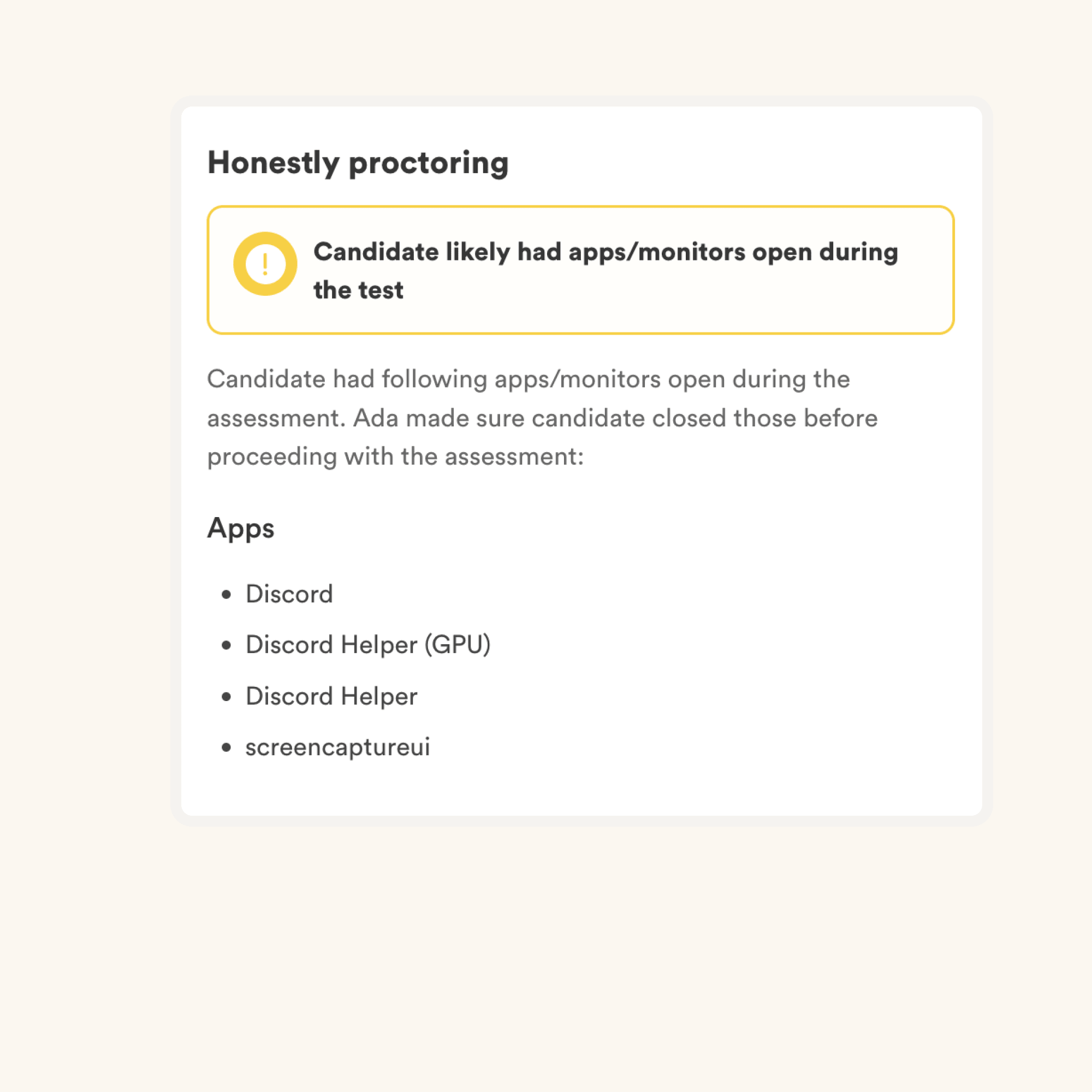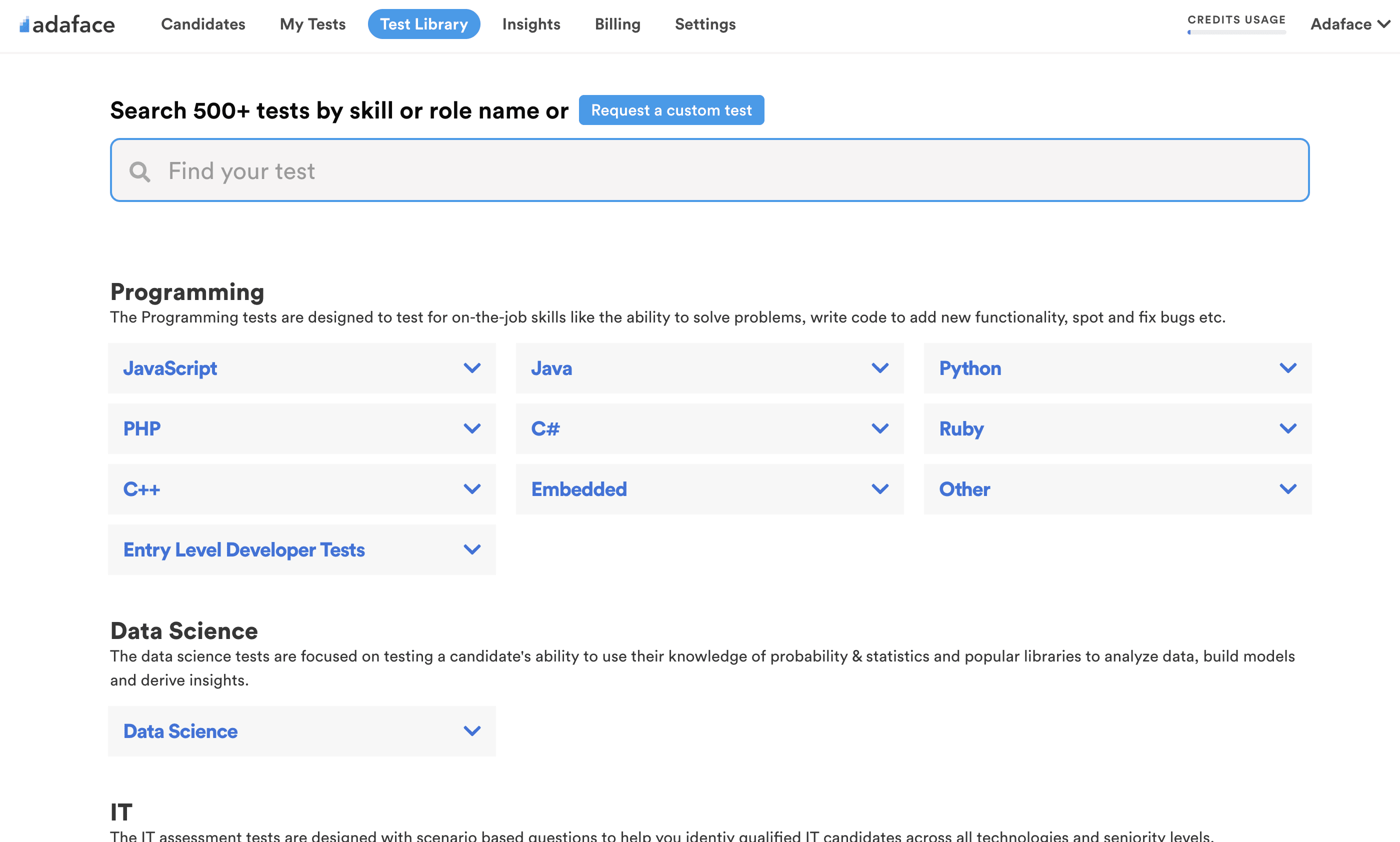Test Duration
35 minsDifficulty Level
Moderate
Questions
- 7 COBOL MCQs
- 5 IBM DB2 MCQs
- 5 IBM JCL MCQs
Availability
Ready to useThe Mainframe Online Test uses scenario-based MCQs to evaluate candidates on their knowledge of mainframe technologies, including COBOL programming language, JCL, VSAM, CICS, and DB2. The test aims to evaluate a candidate's ability to design and develop mainframe applications that adhere to industry standards and best practices effectively.
Covered skills:
Test Duration
35 minsDifficulty Level
Moderate
Questions
Availability
Ready to useThe IBM Mainframe Test is designed to help recruiters identify candidates possessing the skills needed to excel in mainframe environments. This assessment streamlines the hiring process, allowing you to focus on the most promising candidates and reduce the time spent sifting through unqualified applicants.
This test evaluates a candidate's abilities across a spectrum of mainframe technologies. It gauges their proficiency in COBOL programming, database management with DB2, and job control using JCL. Further, the test explores understanding of VSAM data storage, transaction processing with CICS, and information management with IMS. Additionally, it covers knowledge of Assembler language, RPG programming, PL/I, TSO command processing, and ISPF panel management.
Use Adaface tests trusted by recruitment teams globally. Adaface skill assessments measure on-the-job skills of candidates, providing employers with an accurate tool for screening potential hires.
We have a very high focus on the quality of questions that test for on-the-job skills. Every question is non-googleable and we have a very high bar for the level of subject matter experts we onboard to create these questions. We have crawlers to check if any of the questions are leaked online. If/ when a question gets leaked, we get an alert. We change the question for you & let you know.
How we design questionsThese are just a small sample from our library of 15,000+ questions. The actual questions on this IBM Mainframe Test will be non-googleable.
| 🧐 Question | |||||
|---|---|---|---|---|---|
|
Medium
Decision Control
|
Solve
|
||||
|
|
|||||
|
Medium
Multi Dimensional Arrays
|
Solve
|
||||
|
|
|||||
|
Medium
VSAM File Processing in COBOL
|
Solve
|
||||
|
|
|||||
|
Medium
Database Performance Tuning and Data Consistency
|
Solve
|
||||
|
|
|||||
|
Medium
DB2 Isolation Levels and Data Consistency Revisited
|
Solve
|
||||
|
|
|||||
|
Medium
Optimizing Query Performance
|
Solve
|
||||
|
|
|||||
|
Medium
Transaction Handling and Error Recovery in DB2
|
Solve
|
||||
|
|
|||||
|
Medium
Disposition Parameters
|
Solve
|
||||
|
|
|||||
|
Medium
Execution Order and Return Codes
|
Solve
|
||||
|
|
|||||
| 🧐 Question | 🔧 Skill | ||
|---|---|---|---|
|
Medium
Decision Control
|
2 mins COBOL
|
Solve
|
|
|
Medium
Multi Dimensional Arrays
|
2 mins COBOL
|
Solve
|
|
|
Medium
VSAM File Processing in COBOL
|
2 mins COBOL
|
Solve
|
|
|
Medium
Database Performance Tuning and Data Consistency
|
3 mins IBM DB2
|
Solve
|
|
|
Medium
DB2 Isolation Levels and Data Consistency Revisited
|
2 mins IBM DB2
|
Solve
|
|
|
Medium
Optimizing Query Performance
|
2 mins IBM DB2
|
Solve
|
|
|
Medium
Transaction Handling and Error Recovery in DB2
|
3 mins IBM DB2
|
Solve
|
|
|
Medium
Disposition Parameters
|
2 mins IBM JCL
|
Solve
|
|
|
Medium
Execution Order and Return Codes
|
2 mins IBM JCL
|
Solve
|
| 🧐 Question | 🔧 Skill | 💪 Difficulty | ⌛ Time | ||
|---|---|---|---|---|---|
|
Decision Control
|
COBOL
|
Medium | 2 mins |
Solve
|
|
|
Multi Dimensional Arrays
|
COBOL
|
Medium | 2 mins |
Solve
|
|
|
VSAM File Processing in COBOL
|
COBOL
|
Medium | 2 mins |
Solve
|
|
|
Database Performance Tuning and Data Consistency
|
IBM DB2
|
Medium | 3 mins |
Solve
|
|
|
DB2 Isolation Levels and Data Consistency Revisited
|
IBM DB2
|
Medium | 2 mins |
Solve
|
|
|
Optimizing Query Performance
|
IBM DB2
|
Medium | 2 mins |
Solve
|
|
|
Transaction Handling and Error Recovery in DB2
|
IBM DB2
|
Medium | 3 mins |
Solve
|
|
|
Disposition Parameters
|
IBM JCL
|
Medium | 2 mins |
Solve
|
|
|
Execution Order and Return Codes
|
IBM JCL
|
Medium | 2 mins |
Solve
|
With Adaface, we were able to optimise our initial screening process by upwards of 75%, freeing up precious time for both hiring managers and our talent acquisition team alike!
Brandon Lee, Head of People, Love, Bonito
It's very easy to share assessments with candidates and for candidates to use. We get good feedback from candidates about completing the tests. Adaface are very responsive and friendly to deal with.
Kirsty Wood, Human Resources, WillyWeather
We were able to close 106 positions in a record time of 45 days! Adaface enables us to conduct aptitude and psychometric assessments seamlessly. My hiring managers have never been happier with the quality of candidates shortlisted.
Amit Kataria, CHRO, Hanu
We evaluated several of their competitors and found Adaface to be the most compelling. Great library of questions that are designed to test for fit rather than memorization of algorithms.
Swayam Narain, CTO, Affable
The Adaface test library features 500+ tests to enable you to test candidates on all popular skills- everything from programming languages, software frameworks, devops, logical reasoning, abstract reasoning, critical thinking, fluid intelligence, content marketing, talent acquisition, customer service, accounting, product management, sales and more.
The IBM Mainframe Test is designed to evaluate candidates on key skills needed to work with IBM mainframe systems. It is used by recruiters to identify candidates with expertise in COBOL, JCL, DB2, and other mainframe technologies.
Yes, recruiters can request a custom test that includes both IBM Mainframe and COBOL questions. For more details on COBOL assessment, check COBOL Online Test.
The IBM Mainframe Test covers skills such as COBOL, JCL, VSAM, DB2, CICS, IMS, Assembler, RPG, PL/I, TSO, and ISPF. Senior roles are assessed on their understanding of ISPF panel/dialog manager, batch processing, COBOL-DB2, JCL utilities, and more.
Use this test as a pre-screening tool at the start of your recruitment process. Include the test link in your job post or email it directly to candidates. This helps identify the most skilled candidates early on.
Yes, you can test both IBM Mainframe and database skills. Consider combining this with our IBM DB2 Database Test for a comprehensive evaluation.
We offer various IBM-related tests:
Yes, absolutely. Custom assessments are set up based on your job description, and will include questions on all must-have skills you specify. Here's a quick guide on how you can request a custom test.
We have the following anti-cheating features in place:
Read more about the proctoring features.
The primary thing to keep in mind is that an assessment is an elimination tool, not a selection tool. A skills assessment is optimized to help you eliminate candidates who are not technically qualified for the role, it is not optimized to help you find the best candidate for the role. So the ideal way to use an assessment is to decide a threshold score (typically 55%, we help you benchmark) and invite all candidates who score above the threshold for the next rounds of interview.
Each Adaface assessment is customized to your job description/ ideal candidate persona (our subject matter experts will pick the right questions for your assessment from our library of 10000+ questions). This assessment can be customized for any experience level.
Yes, it makes it much easier for you to compare candidates. Options for MCQ questions and the order of questions are randomized. We have anti-cheating/ proctoring features in place. In our enterprise plan, we also have the option to create multiple versions of the same assessment with questions of similar difficulty levels.
No. Unfortunately, we do not support practice tests at the moment. However, you can use our sample questions for practice.
You can check out our pricing plans.
Yes, you can sign up for free and preview this test.
Here is a quick guide on how to request a custom assessment on Adaface.












